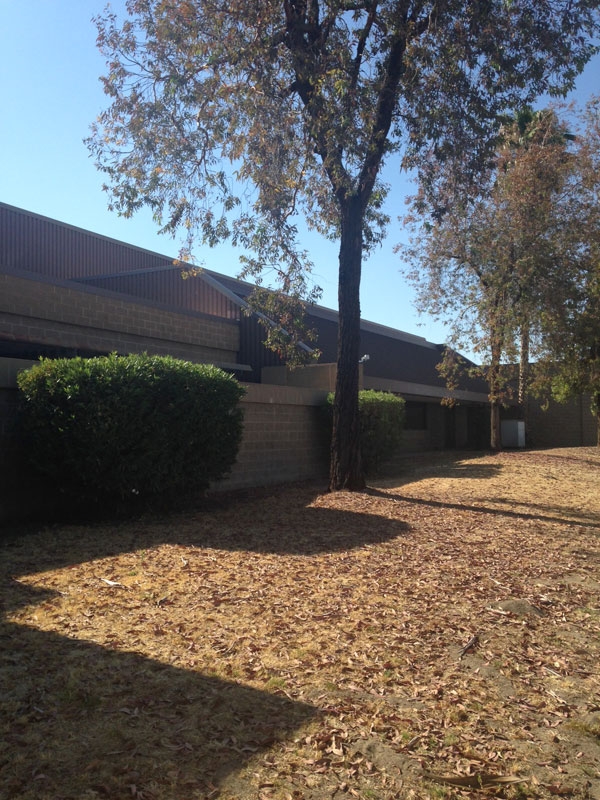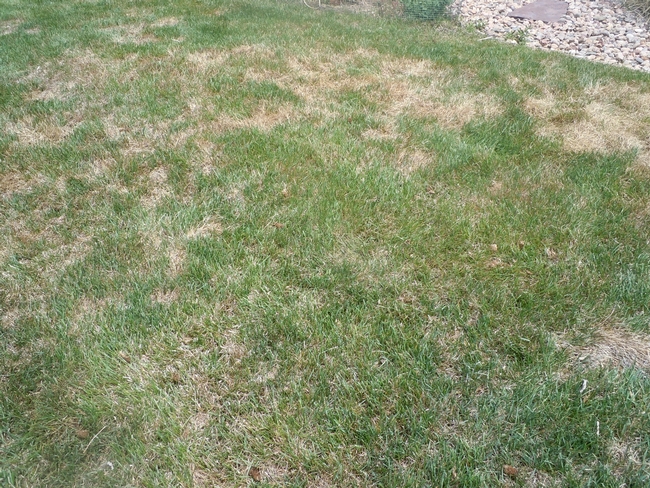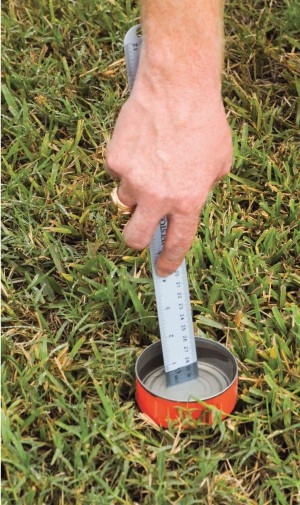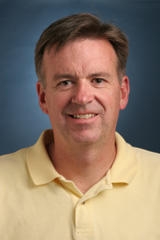
Posts Tagged: Jim Baird
The drought needs not be a death sentence for lawns

“People have gone from one extreme to another,” said Baird, UC ANR Cooperative Extension turf specialist based at UC Riverside. “When we weren't in a water crisis, people were watering seven days a week, 365 days a year. Now, people feel like they're doing the right thing by putting no water on their lawn at all.”
Baird developed a keen appreciation for turf as a teenager playing golf and later working at a municipal golf course in Pueblo, Colo. “I found my passion,” he said. “The rest is history.” He earned a bachelor's degree in horticulture, a master's degree in agronomy, and a doctorate in botany, all the while focused on turf.
Baird's research and the lawn in front of his own Riverside home show that turf can be kept alive, and even attractive, with a minimal amount of water. And maintaining lawns rather than letting them die or replacing the grass with synthetic turf, concrete or so-called drought-tolerant plants offers important ecological services.
As anyone who has enjoyed a picnic in the park can attest, grass is cool. In contrast, the surface of artificial turf has been found to reach 180 degrees on a hot day. It often must be cooled with water before it can be used for sports. Bare soil, concrete and asphalt get significantly warmer and hold heat longer than a grassy lawn, which functions like a natural evaporative cooler.
“The more we let our grass lawns die or go away, the hotter it's going to get,” Baird said.
Grass, like all plants, absorbs carbon from the atmosphere and sequesters it in the soil, a vitally important quality as the country searches for ways to slow global warming. The production of plastics to make artificial turf has the opposite impact. And after a decade or so, artificial turf will wind up in the landfill, where it could take hundreds of years to decompose.

With all these benefits, Baird is dismayed to see the abundance of unnecessarily dead and dying lawns in California. The loss of green growing grass is an ecological loss in the short term, and difficult and expensive to revive once the drought ends.
“A dead lawn could come back as nothing but weeds,” Baird said.
He and his UC ANR colleagues wrote an eight-page publication on managing turfgrass under drought conditions that will help homeowners and lawn managers keep their lawns alive with minimal water.
The publication outlines the concept of deficit irrigation, a system in which the grass has just enough water to maintain an adequate appearance, but with less growth. Irrigation can be cut back to two times per week. If the blades spring back after being walked on, the lawn doesn't need more water.
“The grass may not be as lush and green as usual, but you can still have a lawn where kids and pets can play and families can enjoy outdoor barbecues,” Baird said.
Additional water savings can be achieved by carefully managing the sprinkler system. Areas shaded by trees or a house need less water than grass with day-long sun exposure. Irrigating before dawn reduces evaporation, leaving more water for the plant roots to absorb. Using sprinklers when there is less wind will help prevent overspray onto sidewalks and the street.

Mowing practices also impact the lawn's water use. The grass should be maintained at the tallest height recommended for the species being grown to encourage development of deep roots. Leaving the grass clippings on the lawn with a mulching mower will reduce evaporation from the soil surface.
If new lawns are being considered, water use can be cut by selecting a turfgrass species that uses less water. For example, Baird is studying kikuyugrass in plots at UC Riverside Turfgrass Research Facility. A native of East Africa, kikuyugrass is well adapted to warm, temperate climates in coastal areas and inland valleys of Southern and Central California. Other drought-tolerant grasses being studied at the facility are Bermudagrass and seashore paspalum.
A pdf version of Managing turfgrasses during drought, which includes grass species recommendations, is available for free download from the UC ANR online publication catalog.
For professional landscapers and home gardeners interested in detailed turfgrass research information, UC ANR is hosting a Turfgrass and Landscape Research Field Day Sept. 17. Registration is $90 before Aug. 28, $100 on or after Aug. 28 and $120 onsite. The complete agenda, registration form and previous research reports can be found on the field day website.
An initiative to improve California water quality, quantity and security is part of the UC Division of Agriculture and Natural Resources Strategic Vision 2025.
Author: Jeannette Warnert
PopSci pursues the perfect lawn
Popular Science, the world's largest science and technology magazine, spotlighted the work of UC Riverside Cooperative Extension turf scientist Jim Baird in its May 2010 "Statistically Speaking" feature. Titled "The Perfect Lawn," the full-page story said Baird is bioengineering grass that drinks less water and still earns praise for its lush, emerald green appearance.
"The process is sort of a gladiator academy for grass," PopSci says. The scientists grow promising hybrids, then turn off the water to see which ones survive.
The article opens with statistics on turf grass' ability to sequester carbon. U.S. lawns, it says, could trap enough carbon each year to offset the emissions from burning 1.9 billion gallons of gasoline. However, it takes 7 billion gallons of water a year to keep the grass green.
Other statistics in the feature were:
- 625 square feet - Area of lawn needed to make enough oxygen for one person for one day
- 1.57 billion hours - Time homeowners spend mowing the lawn per year
- 37 billion pounds - Carbon dioxide that residential lawns can store per year
- 800 million gallons - Amount of gas guzzled by lawn mowers annually
- 33,000 square miles - Area of the U.S. covered by residential lawns

Jim Baird
